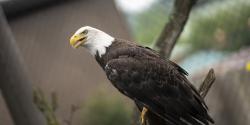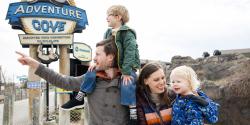Every year in July, the Columbus Zoo and Aquarium leads an initiative to leave the world a better place.
But, the work doesn't end when the month does.
While the Plastic-Free Ecochallenge challenges us to refuse and reduce single-use plastics in our everyday lives, we encourage Zoo guests to continue throughout the year!
So how does the use of single-use plastics effect wildlife and the environment?
- Threat to Wildlife: Many animals, including marine creatures and birds, mistake plastic waste for food. Ingesting plastic can cause severe injury or death. At the Columbus Zoo, we strive to protect and nurture wildlife, but single-use plastics pose a significant threat to animals in their native ranges. For example, sea turtles often mistake plastic bags for jellyfish, leading to ingestion that can block their digestive systems and cause starvation.
- Pollution of Natural Habitats: Single-use plastics often end up in our rivers, lakes, and oceans, creating massive floating garbage patches. This pollution not only spoils the natural beauty of these habitats but also disrupts ecosystems. Protecting the natural habitats of the animals at the Columbus Zoo and beyond is crucial, and reducing single-use plastic can help maintain cleaner, safer environments for all species.
- Long-lasting Environmental Impact: Unlike organic materials, single-use plastics can take hundreds of years to decompose. During this time, they break down into microplastics, which infiltrate soil and water systems, posing long-term environmental hazards. By cutting down on single-use plastics, we can reduce the proliferation of these persistent pollutants, ensuring a healthier planet for future generations and the diverse animal species we care about at the Columbus Zoo.
Want to help? Let's get started.
Here are 5 ways you can go plastic-free at home.
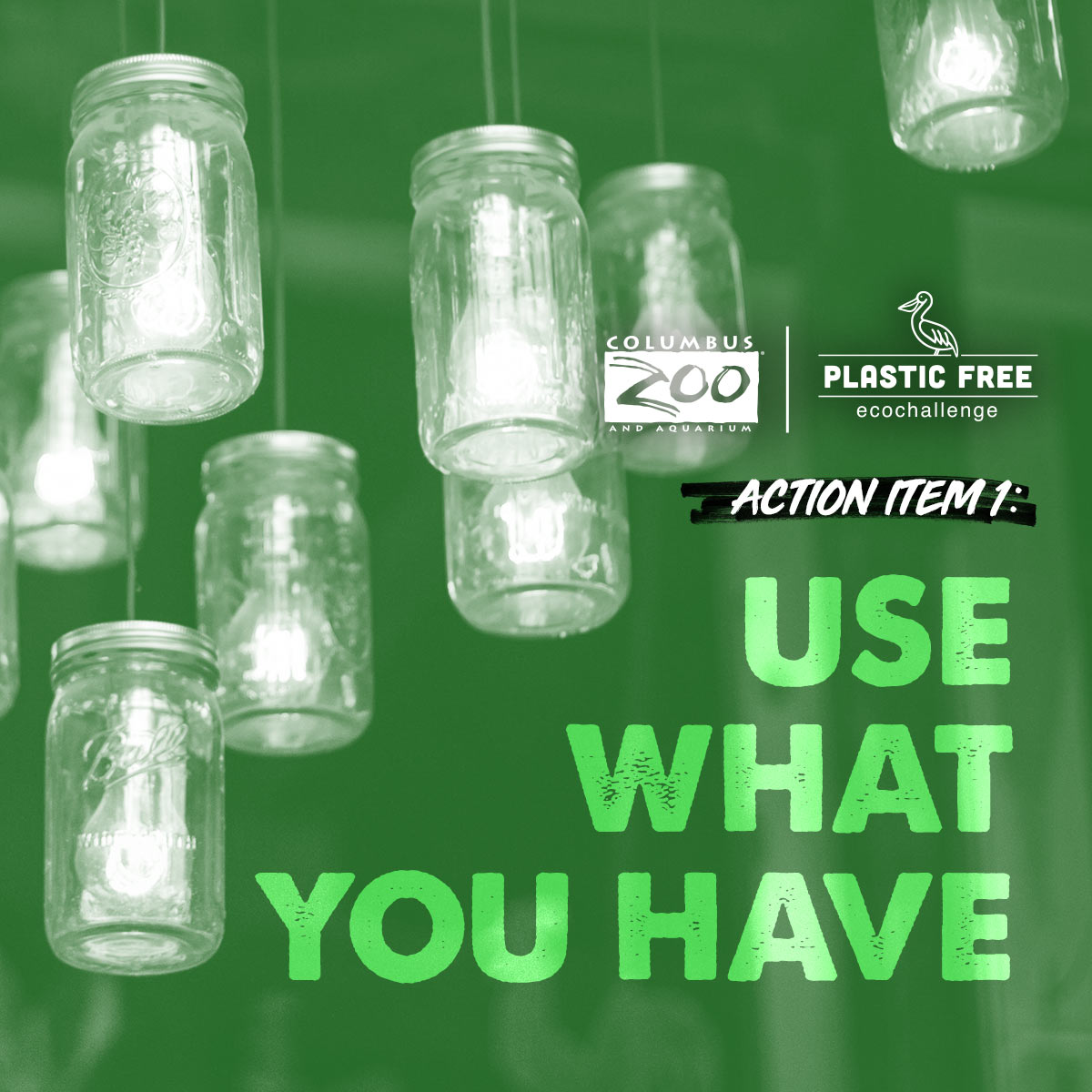
Small changes make a big impact!
Turn old jars into storage, use cloth instead of paper towels, and get creative with your recycling. Find more ways on how to repurpose items you already have by visiting the Plastic-Free EcoChallenge website.
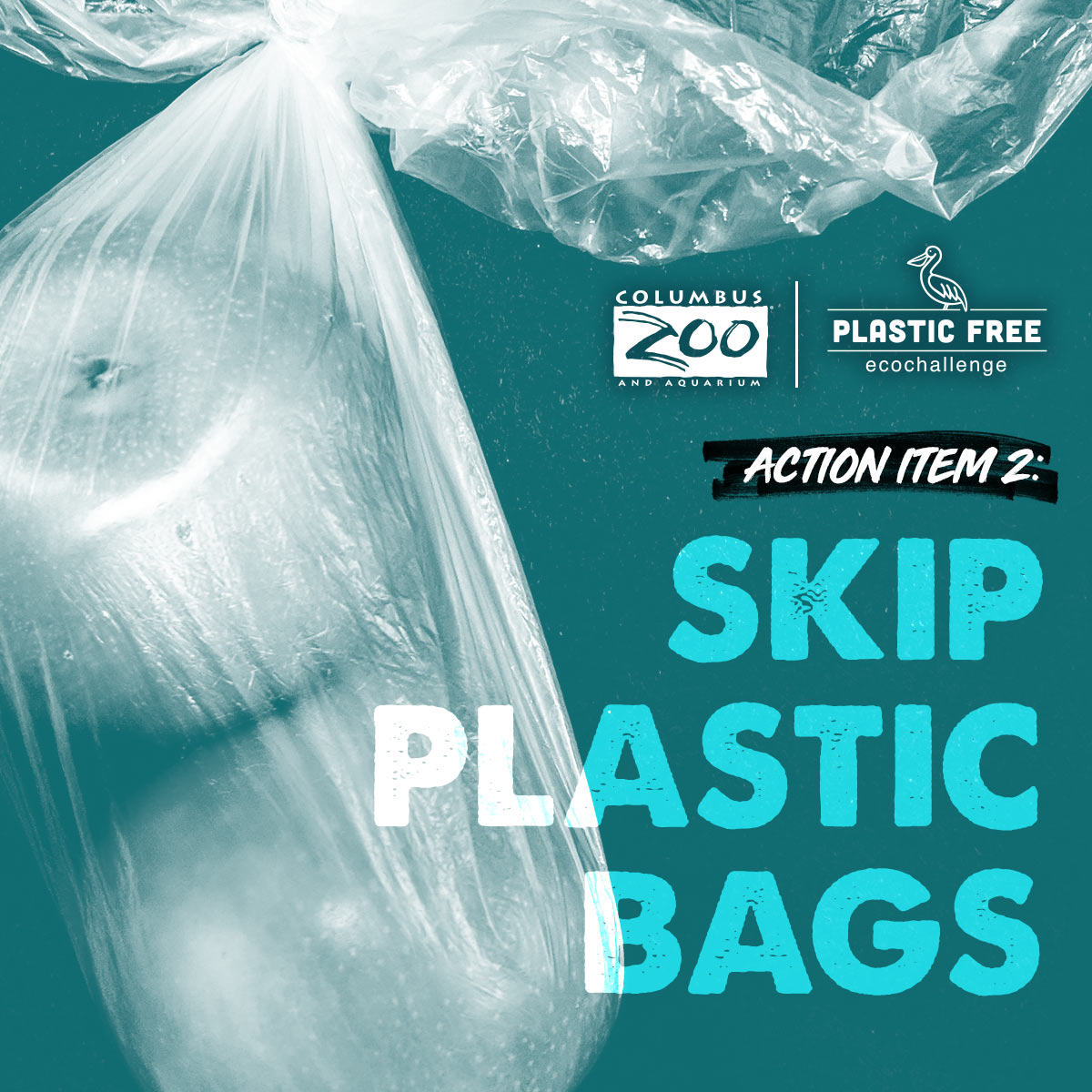
Ditch plastic bags and pick up a reusable sandwich bag! These eco-friendly alternatives help reduce waste and keep our planet clean. Together, we can make a difference! Hint: We sell them at the Columbus Zoo Marketplace.
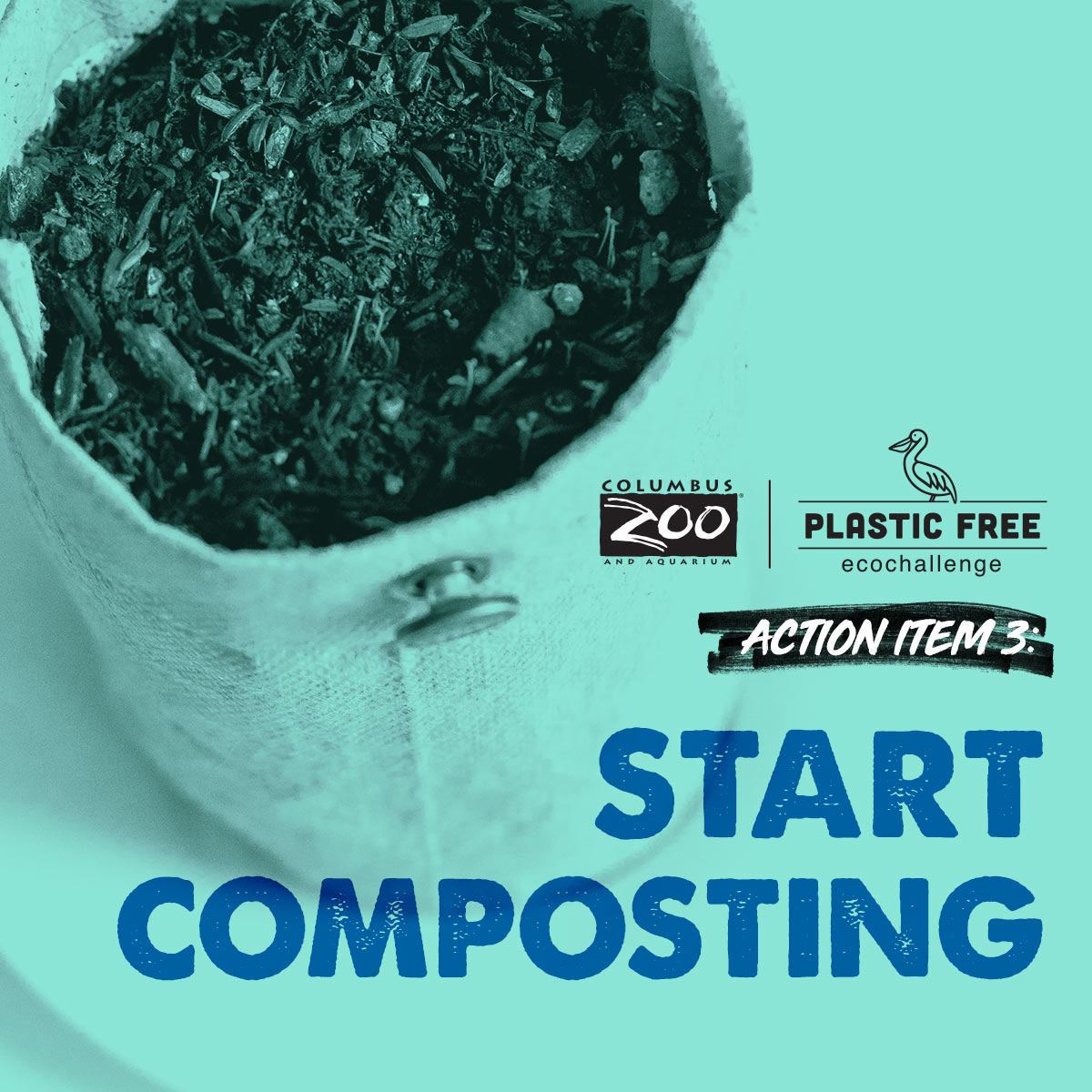
Did you know 72% of the Columbus Zoo's waste is composted?
Start composting at home and turn food scraps into nutrient-rich soil. Let's work together to reduce waste and protect our environment! Want more tips on composting and being a better steward of our environment? Head to our website.
Everyday Actions for Zoo Guests
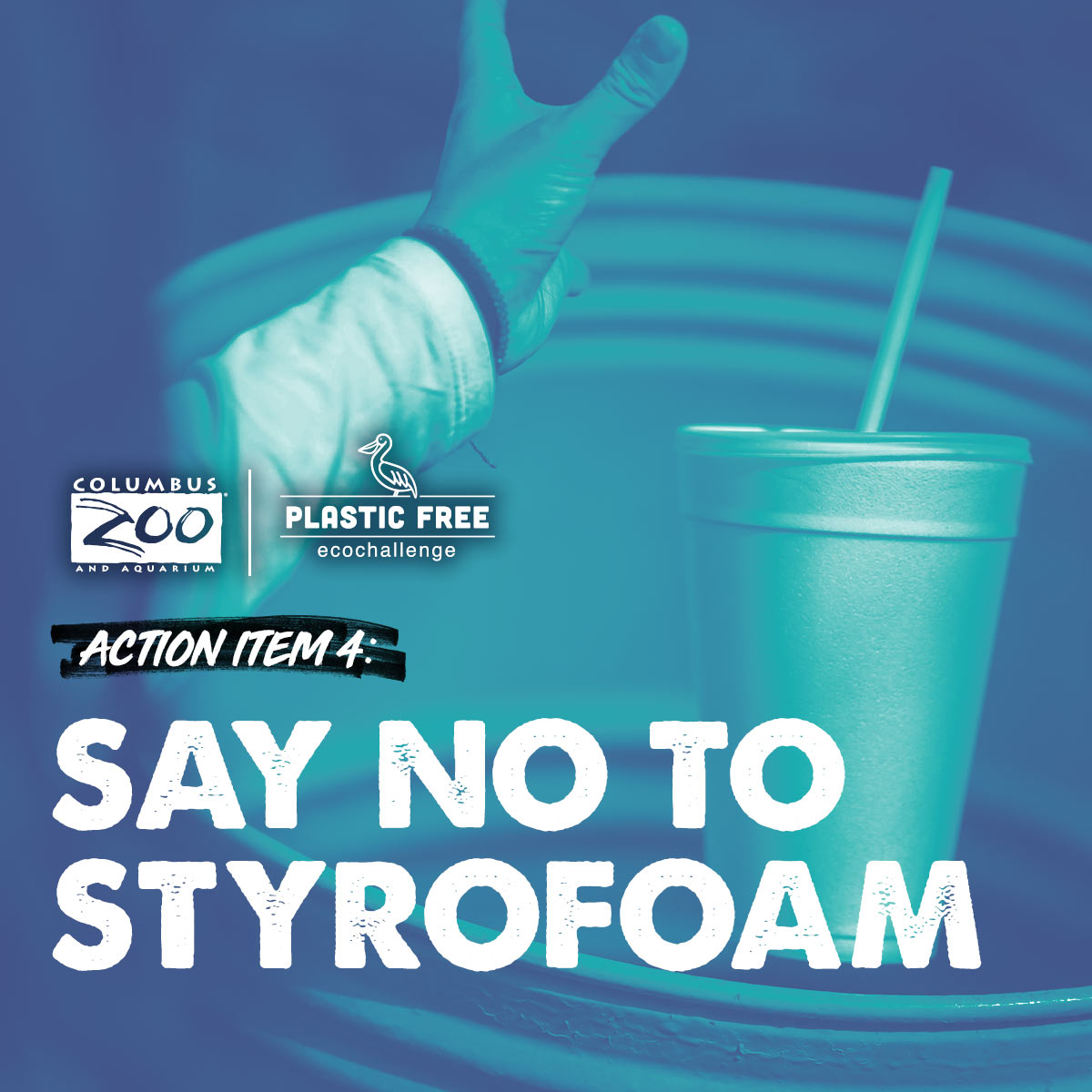
Start saying no to Styrofoam!
Opt for reusable or biodegradable options instead. Help us keep harmful plastics out of our ecosystem—every small step counts! You can learn many other ways to support biodiversity by visiting the Plastic-Free EcoChallenge website.
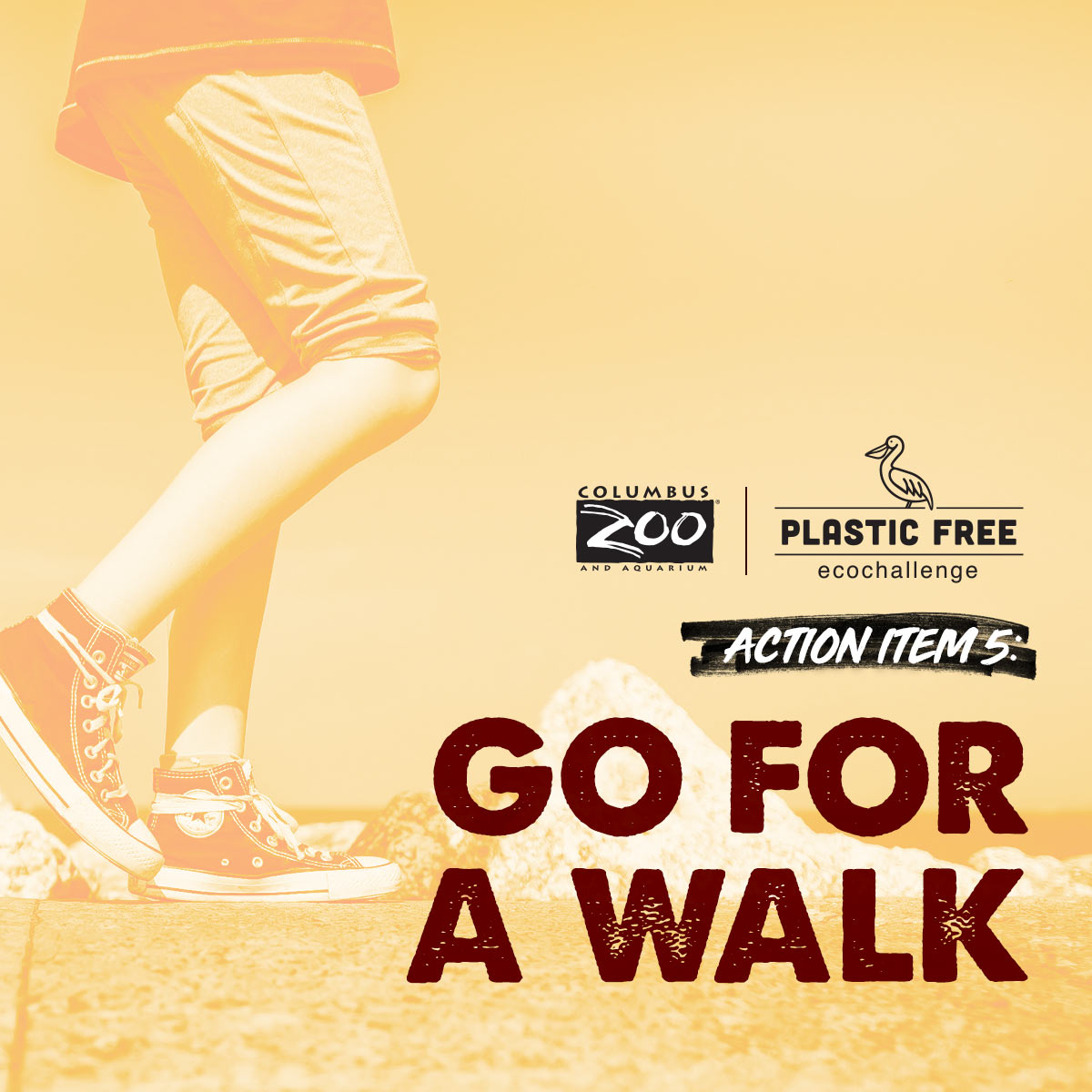
Why walk?
- Reduced Packaging Waste: Walking often means less reliance on drive-thru and takeaway meals, which frequently come in plastic containers and bags (but not at the Zoo, where food is served in compostable or reusable material!). Opting for more local and fresh food options can also significantly reduce plastic waste.
- Lower Emissions: By walking instead of driving, you reduce your carbon footprint, leading to decreased demand for fuel and oil, both of which are key components in plastic production.
- Promotes Minimalism: Walking encourages a more mindful and minimalist lifestyle, leading to fewer impulse purchases often associated with plastic packaging, and promotes carrying reusable items like water bottles and shopping bags.
Fun Fact: Walking the Zoo helps to get your steps in…3.1 miles, in fact!



